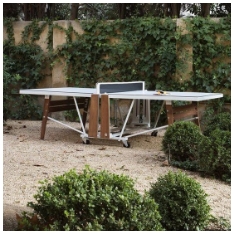Cutthroat Pool is a popular and exciting variation of billiards, designed for three players. Unlike traditional pool games, Cutthroat Pool focuses on eliminating opponents rather than scoring points. This game combines skill, strategy, and precision, making it a favorite among casual and competitive players alike. Understanding how to play Cutthroat Pool is essential for both beginners and experienced billiard enthusiasts.
What is Cutthroat Pool?
Cutthroat Pool is a three-player pool game where each player is assigned a set of five balls. The objective is simple: be the last player with at least one ball remaining on the table. The game starts with all fifteen balls racked together in a triangle, and each player takes turns trying to pocket the opponents’ balls while protecting their own.
The game emphasizes both offense and defense. Players must carefully plan their shots to eliminate opponents while avoiding leaving themselves vulnerable. Learning how to play Cutthroat Pool effectively involves understanding the rules, knowing the different strategies, and practicing proper table positioning.

Equipment Needed for Cutthroat Pool
Before learning how to play Cutthroat Pool, it is important to understand the equipment used:
- Pool Table: Standard pool tables can be used, typically 7, 8, or 9 feet in length.
- Balls: Fifteen numbered balls are used, divided into three sets of five. Each set is assigned to a player.
- Cue Sticks: Each player uses a cue stick to strike the cue ball.
- Cue Ball: The white ball that all players use to hit other balls.
Having the right equipment ensures fair play and a smooth gaming experience.
How to Set Up the Game
Setting up Cutthroat Pool correctly is crucial for a fair and enjoyable match. Here’s a step-by-step guide:
- Rack the Balls: Arrange all fifteen balls in a triangle at the foot of the table. The 1-ball should be at the apex of the rack, with the rest placed randomly.
- Assign Ball Sets: Once the break is made, the first player to pocket a ball will be assigned that ball set. Each player will then have five balls each.
- Determine the Break: Players can decide who breaks first by a coin toss or lag shot.
Proper setup ensures that the game starts smoothly and that each player has an equal chance.
Rules of Cutthroat Pool
Knowing the rules is essential for anyone learning how to play Cutthroat Pool. The main rules include:
Hitting the Balls
Players must always strike the cue ball to hit an opponent’s ball first. Hitting your own ball first is considered a foul.
Pocketing Balls
If a player pockets an opponent’s ball, they continue their turn. If they fail to pocket any balls, the turn passes to the next player.
Fouls
Common fouls include:
- Scratching the cue ball
- Hitting your own ball first
- Failing to hit any ball
When a foul occurs, the incoming player may place the cue ball anywhere on the table for their shot.
Winning the Game
The winner is the last player with at least one ball remaining on the table. The game ends when both opponents’ balls are pocketed.
Strategies for Playing Cutthroat Pool
Learning how to play Cutthroat Pool goes beyond just knowing the rules. Effective strategies can significantly improve your chances of winning:
- Defensive Play
Sometimes, it’s better to focus on defense. Positioning the cue ball to block opponents’ shots or leaving balls in difficult positions can prevent them from eliminating your balls.
- Target Weak Opponents
Focus on eliminating the player who seems strongest or has the best position on the table. This can help reduce the competition early in the game.
- Use Bank Shots
Bank shots, where the cue ball bounces off the rail before hitting an opponent’s ball, can be a useful strategy to reach difficult balls and avoid leaving yourself exposed.
- Maintain Ball Separation
Keeping your balls spread out on the table makes it harder for opponents to pocket them. Tight clusters increase the risk of losing multiple balls in a single turn.
Tips for Beginners
For new players learning how to play Cutthroat Pool, the following tips can improve performance:
- Practice cue control to hit balls accurately.
- Observe opponents’ strategies and adapt accordingly.
- Avoid risky shots that may leave your balls vulnerable.
- Take your time planning each turn to anticipate possible outcomes.
With practice and patience, beginners can quickly improve and enjoy the competitive aspect of Cutthroat Pool.
Common Mistakes to Avoid
Even experienced players can make mistakes in Cutthroat Pool. Avoiding these common pitfalls is important:
- Ignoring defensive play and focusing only on pocketing balls.
- Neglecting the position of your balls on the table.
- Failing to anticipate opponents’ strategies.
- Committing unnecessary fouls, such as scratching the cue ball.
Awareness of these mistakes can lead to better decision-making and more enjoyable gameplay.
Conclusion
Understanding how to play Cutthroat Pool involves more than just knowing the rules. Players need to combine strategy, skill, and foresight to stay competitive. Whether you are a beginner or an experienced player, learning proper setup, rules, and tactics can enhance your experience and increase your chances of winning. By focusing on both offensive and defensive play, mastering the rules, and practicing consistently, anyone can enjoy the thrill of Cutthroat Pool and become a formidable player.
Cutthroat Pool is more than just a game; it’s a test of strategy, precision, and patience. With the right approach and a clear understanding of the rules, players can enjoy hours of challenging and exciting billiard action.





